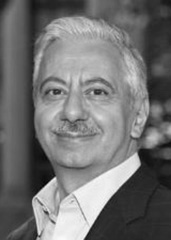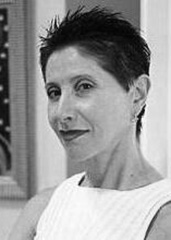Teaching system-level thinking with an interdisciplinary lens
September 20, 2021
This post is republished from Into Practice, a biweekly communication of Harvard’s Office of the Vice Provost for Advances in Learning


Fawwaz Habbal, Executive Dean for Education and Research and Senior Lecturer on Applied Physics, and Doris Sommer, Ira Jewell Williams, Jr. Professor of Romance Languages and Literatures and of African and African American Studies, co-teach systems-level thinking. Their course, Aesthetic Pleasure and Smart Design: Janus Faces the Future, trains students to look at complex problems from the perspective of both artists and engineers. This requires the development of skills in scientific assessment and disinterested aesthetic judgment. In the spirit of Renaissance Now, an international movement to promote sustainable development, Habbal and Sommer model the combination of boldness and humility. Students in ES 27 read and reflect on material which ranges from aesthetic philosophy and history to triggers for scientific revolution. Then they tackle a complex problem through a proposal that will gain aesthetic acceptance and be scientifically effective.
The benefits: Students develop a critical skill for design: the skill of judgment. “Technology has advanced to the point where we can make anything,” Habbal points out. “We should ask what and why.” Here, students think at the systems-level and reflect on their place within that complex system. “It’s essential,” Habbal notes, “to think beyond the surface and explore root causes that link one challenge to many others.”
“Everything around us is interdisciplinary. Nothing in nature is one discipline.”
The challenges: “Since systems pose open-ended problems, we can examine and use several lenses to determine elements, feedback loops, and dynamics. But our partial understanding cannot generate a single answer.” To train students to lean into uncertainty, Habbal and Sommer do not drive the classroom but instead participate as role models—honoring everyone’s unique expertise and questions and encouraging improvisation. Sommer describes the spirit of participants as “fearless but humble.”
Takeaways and best practices
- Co-design your co-teaching. Collaborating on course design is vital to teaching a truly interdisciplinary course. “Professors at Harvard are all experts at something – maybe more than one thing,” Sommer reflects, “but a truly interdisciplinary course requires one to defer to another’s expertise.” This is different from switching leadership of classroom and critical to facilitators who model how to acknowledge the limits of one’s knowledge and the joy of new understandings. They depend on each other’s expertise and explore the connections between engineering concepts and humanistic interpretation.
- Enable students to practice synthesis in conversation with each other. Habbal and Sommer achieve full participation through “chain conversation” in which students invite each other to contribute after speaking. “If they go on tangents, we allow the flow and encourage them to reconnect with the readings.” This ensures that everyone synthesizes the range of materials and contributes from their expertise. “The course is not ‘downloading,’” Habbal smiles. “It sets off chains that continue beyond our sessions.”
- Embrace opportunities to practice synthesis through assignments. “Projects are the ideal platform to understand that innovation requires practice, and that discovery and success are not obtained through a linear process.” As a result, Habbal and Sommer assign a project as the final assessment for the course. Students work together to understand what exists and imagine what is possible, while also building connections with their peers. Through collaborating within a real-world context and working within the “heterogeneity” of interdisciplinarity, students can better experience “a true paradigm shift.” Examples of student proposals included: a vegetable garden irrigated by trapping humidity on the rainless hills of Lima, Peru; a museum pedagogy that uses moveable galleries to equitably engages broad publics; landscaping to recover a waterlogged coastal area.
Bottom line: Sommer and Habbal emphasize diversity in the teaching team’s expertise. Sommer favors a small teaching team that allows for active synergies and frank interchanges inside and outside the classroom. While Habbal notes that even the multiple of two offers a plethora of information that leads beyond one’s own discipline, “the bottom line is how we discuss it and how we relate it to our lived context.”

